The BNMA BN Repository
This repository is a resource for posting and downloading Bayesian network models for sharing with others and for providing supporting material for publications. Please respect authors' rights where noted.
Search
9 BNs found.
Shark management survey analysis

In our recently published article “A scenario study of the acceptability to ocean users of more and less invasive management after shark-human interactions”, Bayesian Network (BN) was chosen as the principal analysis tool for identifying patterns from a study of 1769 valid responses from a survey which was open to all Australian residents aged 18 or over. The study was aimed to (1) Improve understanding of community attitudes in NSW to shark management options, and (2) Improve understanding of contextual influences on attitudes to shark bite mitigation approaches and how authorities should respond following an interaction. A modified BN model (26 nodes, 54 links) was proposed (implemented in Netica version 6.09) to improve the prediction performance of those four variables of risk management policy/strategy in the original BN model (26 nodes, 44 links) (implemented in Netica version 6.05)
iris

Simple classification network based on the classic Iris flower data set introduced by the statistician and biologist Ronald Fisher. The data set consists of 50 samples from each of three species of Iris (Iris setosa, Iris virginica and Iris versicolor). Four features were measured from each sample: the length and the width of the sepals and petals, in centimetres.
Refer: <en.wikipedia.org...>
Polar Bear Stressor Model, Phase II (2016)
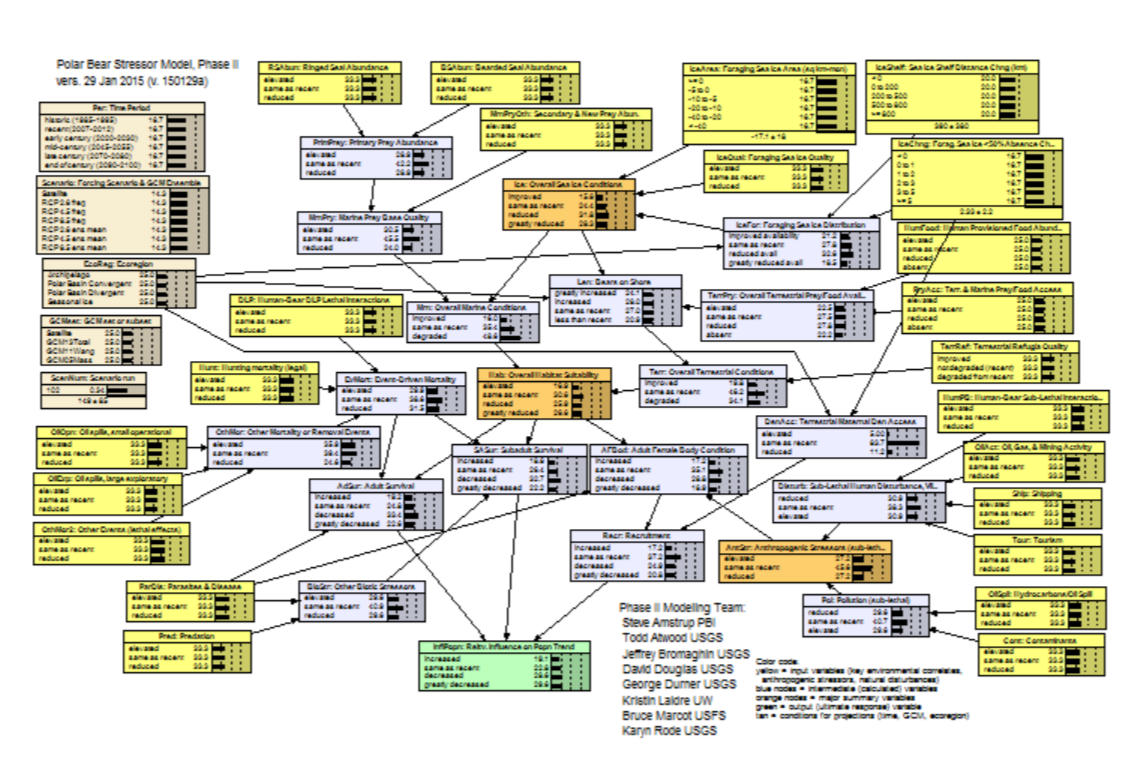
The polar bear (Ursus maritimus) was listed as a globally threatened species under the U.S. Endangered Species Act (ESA) in 2008. We updated a Bayesian network model (available at <abnms.org...>) previously used to forecast the future status of polar bears worldwide, using new information on actual and predicted sea ice loss and polar bear responses, to evaluate the relative influence of plausible threats and their mitigation through management actions on the persistence of polar bears in four ecoregions. Overall sea ice conditions, determined by rising global temperatures, were the most influential determinant of population outcomes which worsened over time through the end of the century under both stabilized and unabated greenhouse gas (GHG) emission pathways. Marine prey (seal) availability, linked closely to sea ice trend, had slightly less influence on outcomes than did sea ice availability itself. Reduced mortality from hunting and defense of life and property interactions resulted in modest declines in the probability of a decreased or greatly decreased population outcome. Minimizing other stressors alone such as trans-Arctic shipping, oil and gas exploration, and contaminants had a negligible effect on polar bear outcomes. A case file for the model can be found here: <abnms.org...>.
The Phase I Polar Bear Stressor Model can be found here: <abnms.org...>
Marten Telomere Genetics for Age Determination
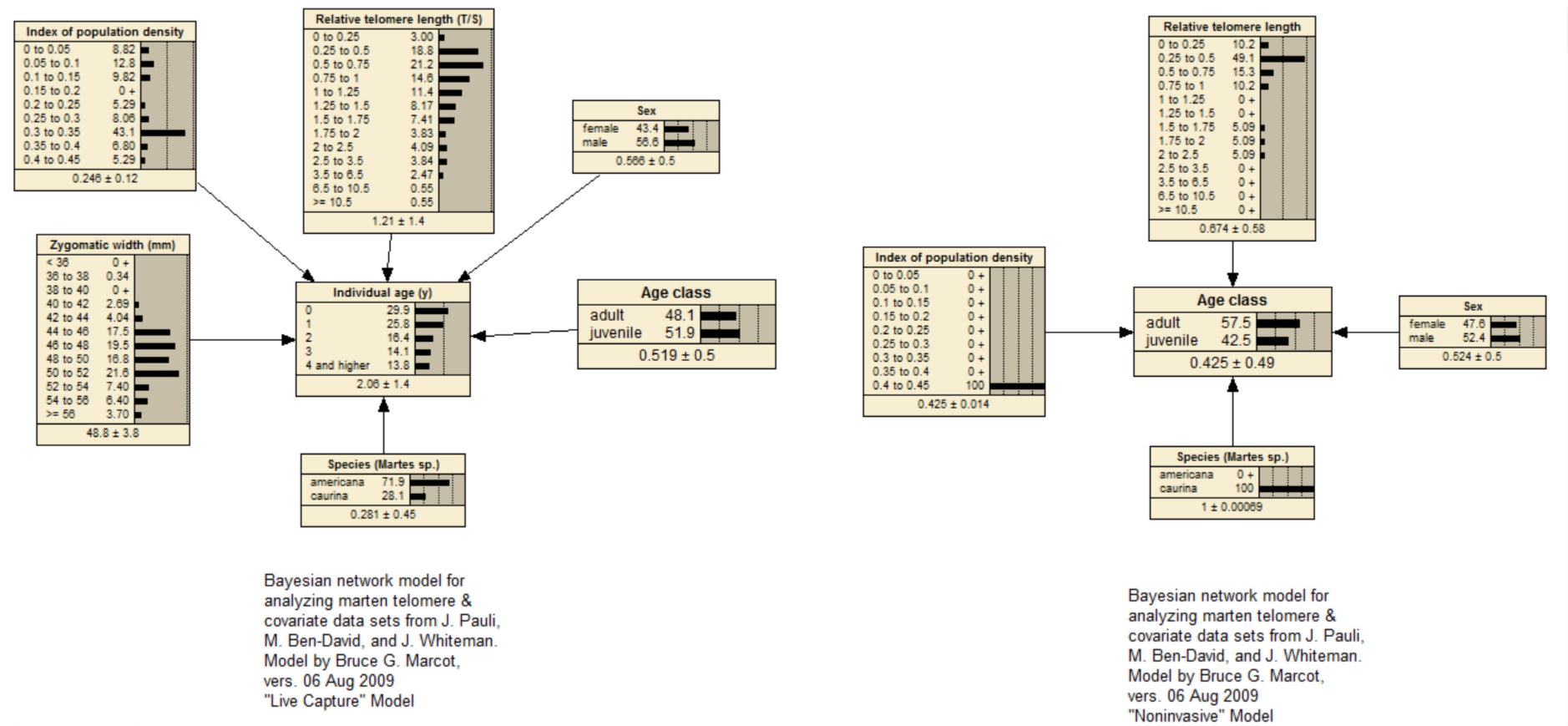
These models, trained from laboratory and field data, predict the age of individuals of two species of marten (Martes americana and M. caurina) in North America, from relative length of telomeres (fragmented ends of chromosomes that shorten over time) and other anatomical and environmental factors. It is the first time that age of an organism can be predicted from telomeres (and other factors) in a reliable manner. Two models are presented here: the "live capture" versions, for predicting age in years from captured (or museum specimen) martens; and the "noninvasive" version for predicting age class from non-invasive genetic samples where the actual animal does not need to be captured and handled. A case file for running the live capture model version can be found at <abnms.org...>.
Bull Trout Food Web
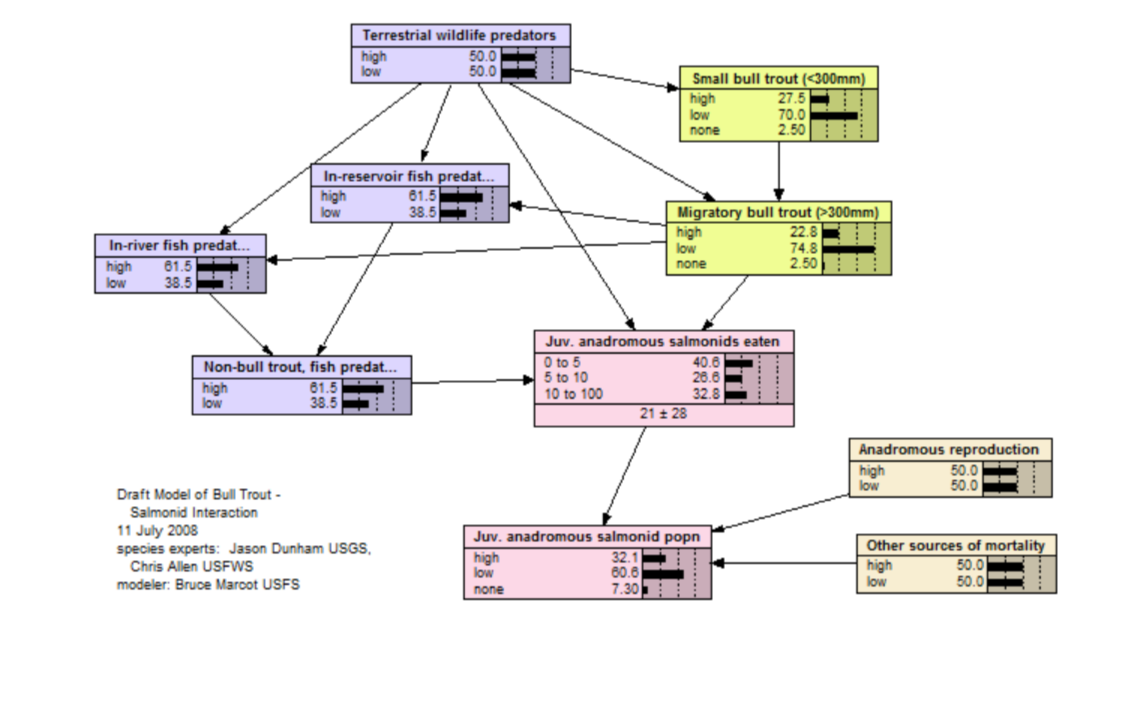
This model illustrates potential food web and species interaction dynamics related to interactions between bull trout (Salvelinus confluentus) and anadromous salmonid fish existing in the same river system. (Explanation of nodes: small bull trout = at least juveniles and possibly resident adults; terrestrial wildlife predators = some amphibians, reptiles, birds, and mammals; juvenile [juv.] anadromous salmonids eaten = average annual percentage of total juvenile anadromous salmonids that are consumed by fish and other predators; juvenile anadromous salmonids = parr to smolt stages, although some bull trout predation on eggs also occurs; popn = population; anadromous reproduction = number of offspring [embryos] produced by spawning adult salmonids; other sources of mortality = poor water quality, passage through reservoirs and past dams, natural disturbances, etc.).
Pacific Walrus
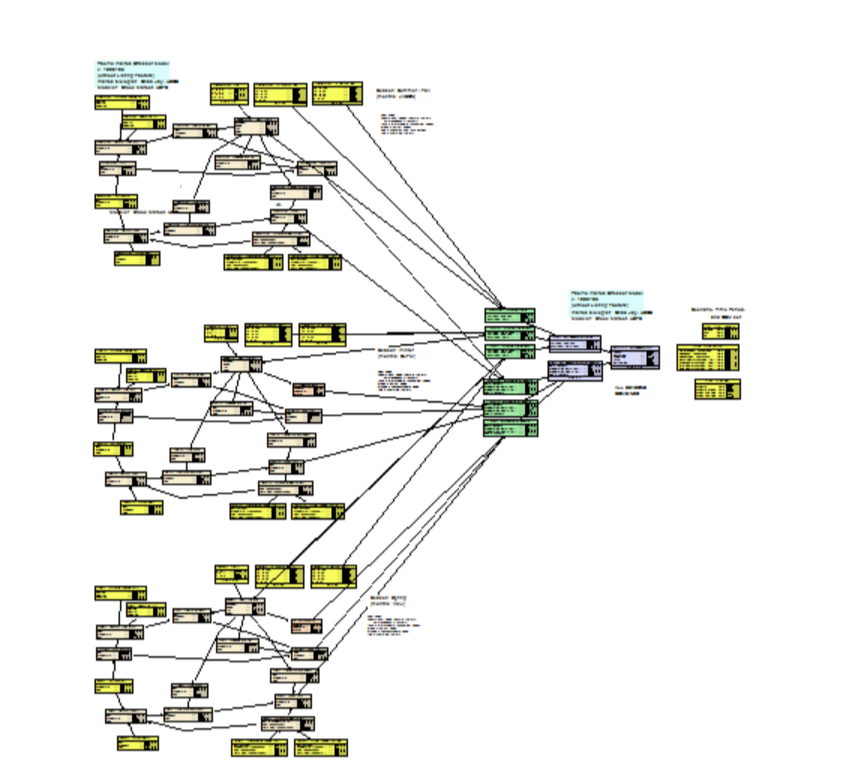
We developed a Bayesian network model to integrate potential effects of changing environmental conditions and anthropogenic stressors on the future status of the Pacific walrus population in the Chukchi and Bering Seas, at four periods through the twenty-first century. The model framework allowed for inclusion of various sources and levels of knowledge, and representation of structural and parameter uncertainties. Walrus outcome probabilities through the century reflected a clear trend of worsening conditions for the subspecies.
Polar Bear Stressor Model, Phase I (2007-08)
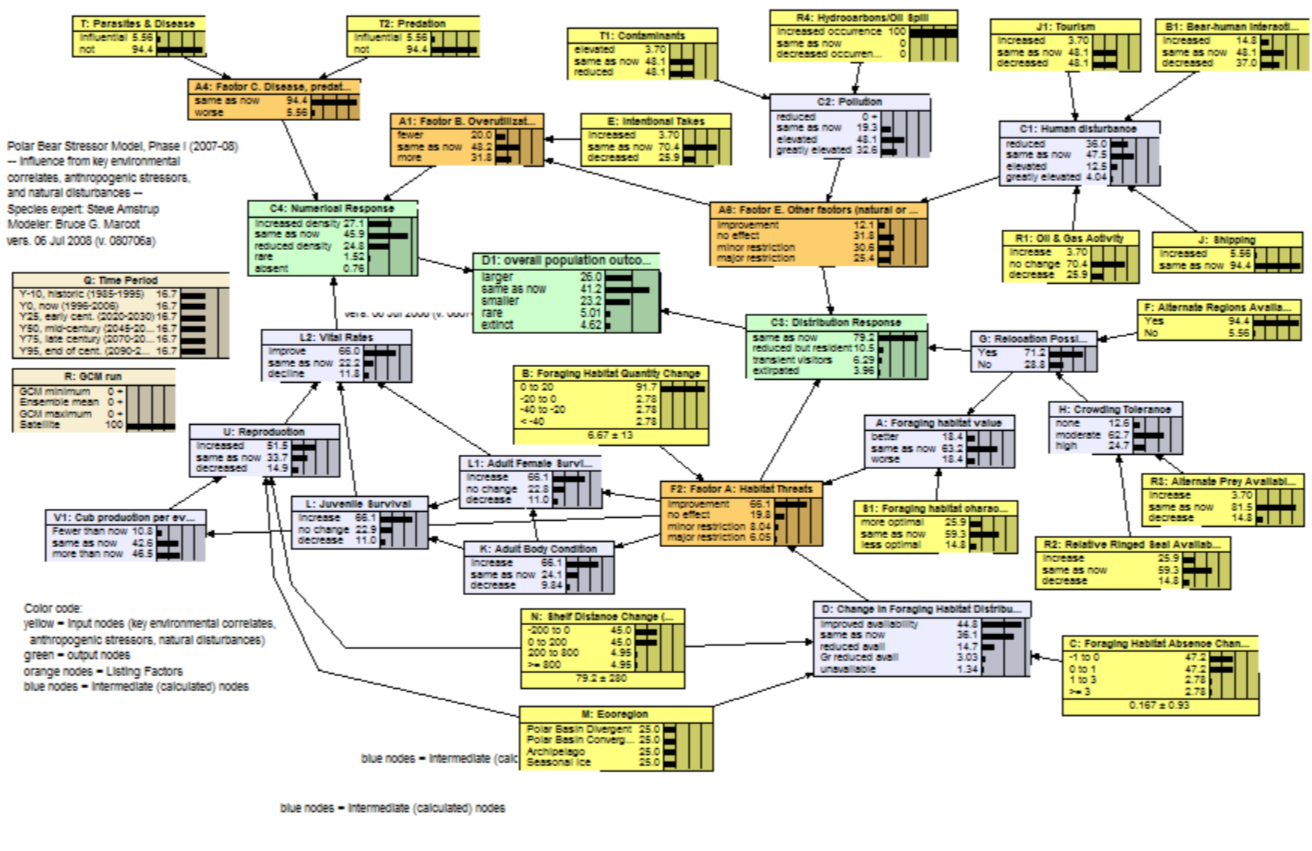
In 2007-08, to inform the U.S. Fish and Wildlife Service decision, whether or not to list polar bears as threatened under the Endangered Species Act (ESA), we projected the status of the world’s polar bears (Ursus maritimus) for decades centered on future years 2025, 2050, 2075, and 2095. We defined four ecoregions based on current and projected sea ice conditions: seasonal ice, Canadian Archipelago, polar basin divergent, and polar basin convergent ecoregions. We incorporated general circulation model projections of future sea ice into a Bayesian network (BN) model structured around the factors considered in ESA decisions. This first-generation (Phase I) BN model combined empirical data, interpretations of data, and professional judgments of one polar bear expert into a probabilistic framework that identifies causal links between environmental stressors and polar bear responses. The BN model projected extirpation of polar bears from the seasonal ice and polar basin divergent ecoregions, where ≈2/3 of the world’s polar bears currently occur, by mid century. Decline in ice habitat was the overriding factor driving the model outcomes.
The Polar Bear Stressor Model, Phase II (2016) can be found here: <abnms.org...>
Recreation Effects on Brown Bears
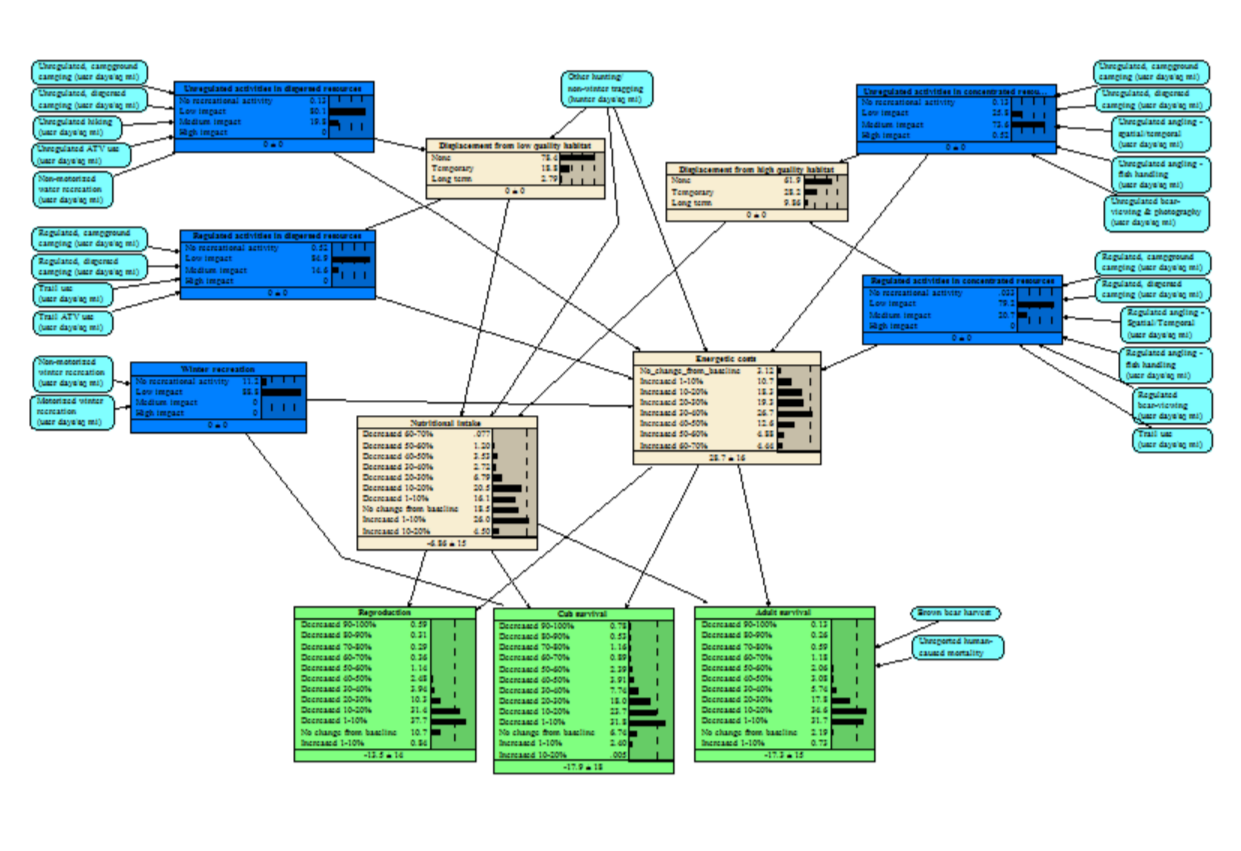
We integrated results from empirical studies with expert opinion to better understand the potential population-level effects of recreational activities on brown bears. We conducted a literature review and Delphi survey of brown bear experts to better understand the frequencies and types of recreations occurring in bear habitats and their potential effects, and to identify management solutions and research needs. We then developed a Bayesian network model that allows managers to estimate the potential effects of recreational management decisions in bear habitats.
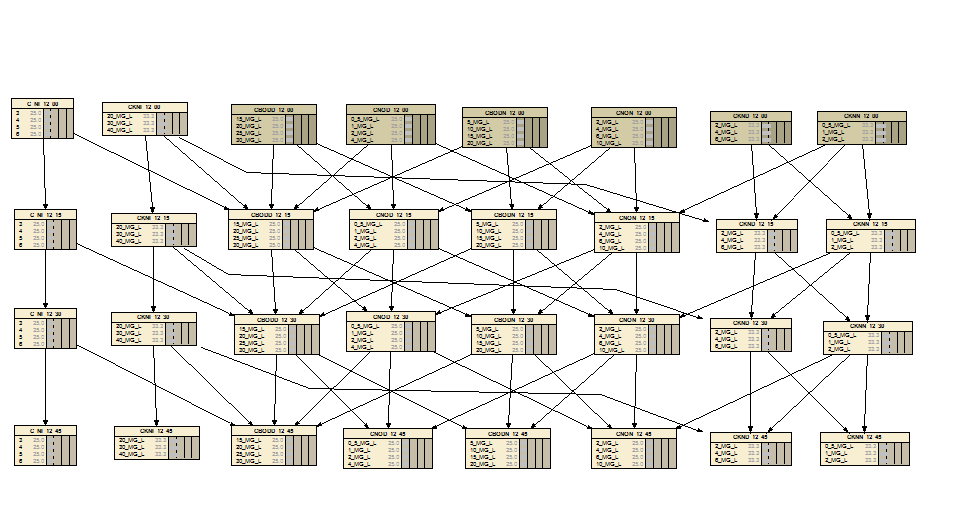
 Bayesian Intelligence
Bayesian Intelligence